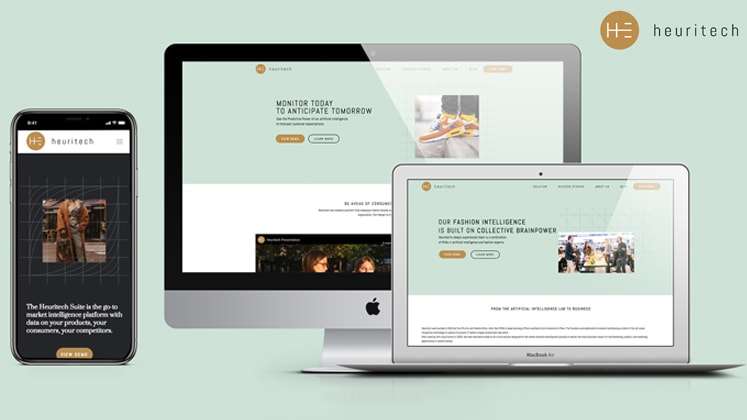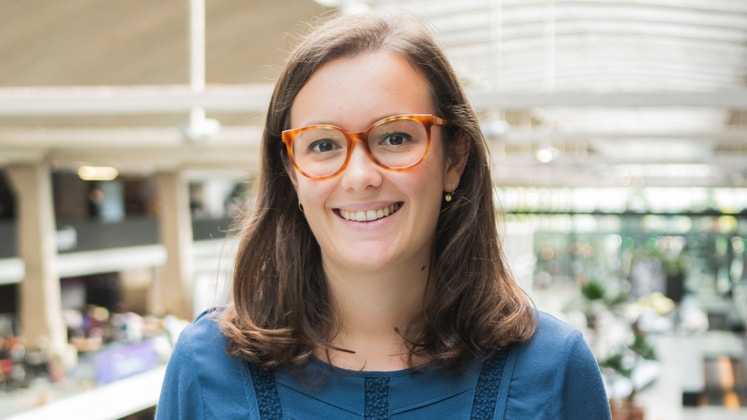
Fashion trend forecasting is becoming increasingly popular among millennials. This is because of the fact that trend forecasting concept predicts future trends of not just colours and materials that will be popular over next 1-2 years, but also delves into the lifestyles and buying habits of fashion consumers to gain insight about their present preferences and future expectations.
The most important contribution to precise forecasting comes from social media which helps trend forecasting companies in capturing and analysing fashion images in real-time. France-based Heuritech, termed as the world’s first company using Artificial Intelligence for trend forecasting, allows fashion brands to predict trends months before they happen, adapt their designs and better plan their merchandise mix. “Heuritech empowers fashion brands to fuel creativity, produce more sustainably and improve profitability with cutting-edge artificial intelligence and comprehensive data,” informed Célia Poncelin, Head of Marketing & Communications, Heuritech to Team Apparel Resources.
Process of analysis images on social media…
Working with renowned fashion brands namely Louis Vuitton, Dior, Paco Rabanne, Adidas and Kontoor Brands, the French start-up’s technology scans 3 million Instagram images on a daily basis to predict whether a specific style will sell or not. The results from the analysis are purely data-driven. Since Instagram has a number of trendsetters and their followers, they keep sharing images on their respective accounts. Heuritech selects publicly accessible Instagram accounts with the consent of the brands it is analysing the images for. The selection is kept diverse with a mix of heavy-duty influencers as well as general fashion customers. Images are then processed according to the brief given by the brand.
“Heuritech uses social media images and artificial intelligence to forecast trends depending on audiences and geography to provide tailored insights for each brand. We have developed an image recognition technology that analyses each day 3 million images, stories and videos on social media. We translate that data into trends forecast, thanks to the algorithms developed in-house and based on 4,000 trends from 5 years of historical data,” shared Célia.
Analysing images comes with a challenge…
According to Heuritech, with the rise of social media, it has become crucial for brands to manage their presence on visual platforms such as Instagram. Traditional listening solutions follow hashtags to monitor brand popularity. However, this methodology is fraught with problems. Firstly, hashtag pollution is widespread on Instagram, i.e. a large majority of posts with a brand hashtag have in fact no relationship to that brand.
Secondly, a large majority of Instagram users do not include hashtags in their posts, i.e. brands miss products. As a consequence, unless brands follow all of their clients’ accounts, it is impossible to find their products.

To find solution of this issue, Heuritech ran a study to assess the impact of Instagram hashtag pollution on brand image. Heuritech’s visual recognition technology, based on the latest deep learning research, is trained to recognise hundreds of branded products in images. It therefore analysed the relationship between the recognised products and the mentioned hashtags. Heuritech called it ’Missed Content’ each time the product from a brand was found through its visual recognition technology without that brand’s hashtag. “With the image recognition algorithm, our precision is 90 per cent,” added Célia.
#sustainablefashion is an emerging trend…
Heuritech also released a sustainability report this year which showed that #sustainablefashion is one of the most important hashtags which has been multiplied by 5 times in the last 3 years on Instagram, showing how much consumers care about this topic. It is not surprising seeing that consumers across the world are demanding for more sustainable fashion; therefore, Heuritech decided to look at how it has evolved over time.
“This hashtag started booming in 2018. In the US, the breakthrough happened in March 2018, most likely echoing the release of the Sustainable Fashion Report published by the United Nations,” informed Célia. Within 6 months, between January and June, the hashtag’s popularity grew by 60 per cent. Europe has closely followed this strong trend, reinforcing the belief that sustainable fashion will keep on transforming our way of creating and consuming. The hashtag has grown by x6 in the US versus x4 in Europe since 2015.
Case Study
How did a merchandiser adjust his buy to avoid overstock on a declining trend?
The plaid coat was one of the best-selling products last winter. In general, plaid was one of the hit trends of last year and has already spread over to the mass market. One of the clients of Heuritech, a regional merchandiser for a fast fashion brand, had to decide on the product assortment for his region during the buying season but he was unsure whether to invest in plaid coats a year before. He therefore initially planned to buy 6 SKUs. He was interested in forecasting the level of demand in his market in the next 6 months in order to assess the depth and width of his offer for this style. He targeted the age range (women) from 20 to 45 years; the price range varied from € 80 to € 200 and time to market was 6 months.
Solutions given by Heuritech
In order to help its client, Heuritech applied its Visual Recognition Technology to analyse social media images for plaid trend. The technology analysed image content in a very detailed way and concluded that the plaid coat trend is declining, so the client should buy 3 SKUs instead of 6 as originally planned.
Observations of forecasting
By analysing predictions, the client discovered that the plaid coat trend would start declining slowly in his region over the next few months faster than it would in other markets. He should therefore be conservative when buying in showrooms to avoid overstock.
Trend declining by 10 per cent vs. last year
Including plaid coats in his offer was however important, since in terms of volume, this style would still account for a high market share of coats.
8 per cent of the coats market share
Conclusion
The client decided to adjust his buying plan to narrow the offer focusing on only 3 SKUs instead of 6, which were initially budgeted in his collection plan and decreased the quantities bought by (-) 10 per cent.

Post a Comment